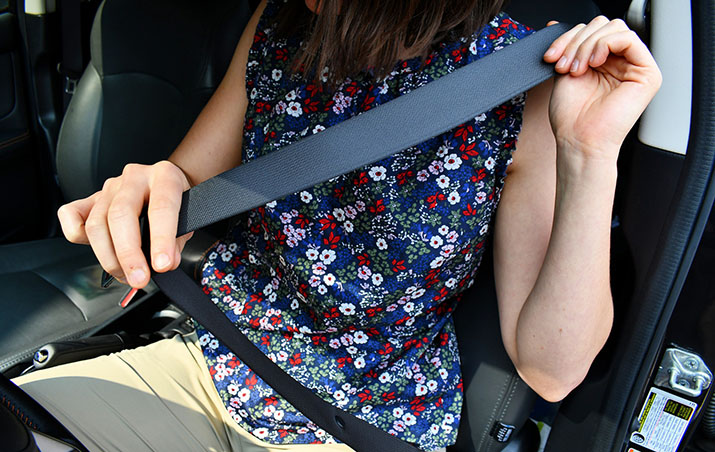There are no guarantees in life. Except that a seat belt will protect you in a crash.
June 17, 2021

What would you say if we told you there's something that can remarkably increase your chances of surviving a car crash? Something like a force field that will keep you from being thrown from the vehicle during a collision – something that takes almost no time? If such a thing existed, would you use it whenever you got into a car?
Fortunately, this incredible, life-saving device does exist. It's called a seat belt. It takes about two seconds to put on and costs you nothing to use. But that little 2-inch-wide piece of webbing is often the difference between life and death in a crash. How do we know? In 1987, just a year after the state's secondary seat belt law went into effect, 4,176 vehicle occupants suffered severe injuries in Minnesota traffic crashes. That number dropped to 1,056 in 2020. And the lives saved by seat belts nationwide would fill a professional sports stadium - more than 69,000 people (2015-2019), according to the National Highway Traffic Safety Administration.
“But I'm a good driver," you say. “I obey the speed limit, put my phone away, and always drive sober. Why do I need a seat belt?" Because you share the road with other drivers whose behavior you can neither control nor predict. Because weather and nature can be harsh and surprising.
Between May 24 and June 6, law enforcement agencies throughout Minnesota conducted the Click It or Ticket seat belt and child restraint campaign to help avert easily preventable tragedy. The campaign included education and awareness to influence smart seat belt choices, as unbelted deaths this year (42), as of June 15, continue to surpass last year at this time (30).
Law enforcement conducted extra patrols and awareness efforts, reporting 2,070 seat belt citations and 91 child seat citations. In one case, St. Paul Police cited a speeding, unbuckled female driver. The officer also cited the driver for violations including holding a phone and using FaceTime, and for three children not in child restraints in the backseat. In another, a Buffalo Lake Police officer stopped a female driver with a child in a car seat who was not actually restrained in the car seat. The officer adjusted the car seat to fit the child and buckled the child properly.
In Minnesota, all children must be in a child restraint until they are 4'9" tall or age 8, whichever comes first. And it doesn't have to be a chore. When the family gets in the car, try having a contest for who can buckle up the fastest. Or have one child be the lookout to make sure everyone has buckled up. When that happens, the lookout can tell you it's time to start the car.
Like every other human, you can't predict the future. But you can take the two seconds necessary to buckle your seat belt and the minute or two to secure your children. That tiny sacrifice of time can have a big payoff in safety: It will help protect you and your kids from the unknown while you're on the road.

